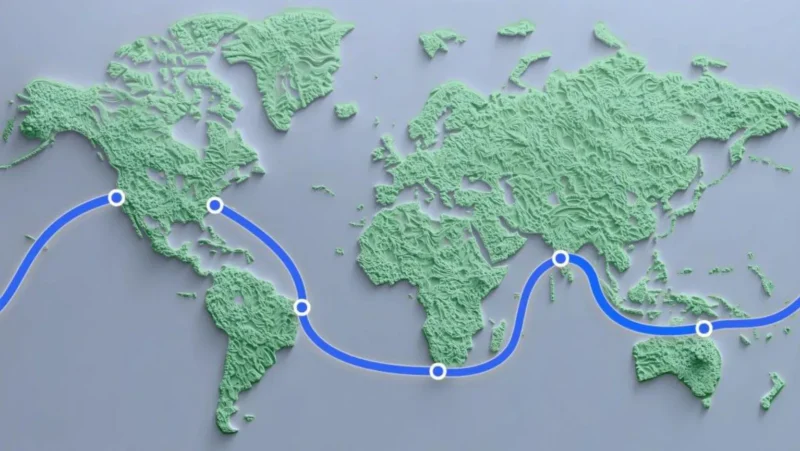Meta has unveiled plans for Project Waterworth, an ambitious 50,000km (31,000 mile) sub-sea cable that will span the globe, connecting the US, India, South Africa, Brazil, and other regions. When completed, it will be the world’s longest underwater cable project.
The tech giant, which owns Facebook, Instagram, and WhatsApp, is expanding its technological footprint beyond social media to include artificial intelligence (AI) and the infrastructure that supports it. Meta states that the new cable will provide “industry-leading connectivity” to five major continents and enhance its AI initiatives. “This project will enable greater economic co-operation, facilitate digital inclusion, and open opportunities for technological development in these regions,” Meta said in a blog post.
According to the company, the cable will be the longest to date using a 24 fibre-pair system, offering a higher capacity.
Sub-sea cables have become vital for powering digital services and enabling rapid global data transfer. More than 95% of the world’s internet traffic is transferred through these underwater cables, according to commonly cited statistics. Telecom market research firm TeleGeography reports over 600 publicly-known sub-sea cable systems globally.
Meta has previously backed the 2Africa cable, a 45,000km project linking three continents with support from mobile operators such as Orange, Vodafone, and China Mobile. Other tech giants have also invested heavily in sub-sea cables; for example, Google has plans for the first sub-sea cable linking Africa and Australia in 2024, alongside a $1bn investment to boost connectivity to Japan with two new cables in the Pacific Ocean.
“Over the past decade there has been a shift in which these cables are increasingly laid by large technology companies,” said Professor Vili Lehdonvirta of the Oxford Internet Institute, speaking to the BBC. “This is in contrast to the past, where underwater cables were laid and financed by large groups of national telecoms firms, due to their considerable investment needs.”
Prof. Lehdonvirta explained that this shift reflects the growing size and financial power of major tech companies, enabling them to fund such infrastructure independently—something that may concern policymakers about the concentration in digital markets.




